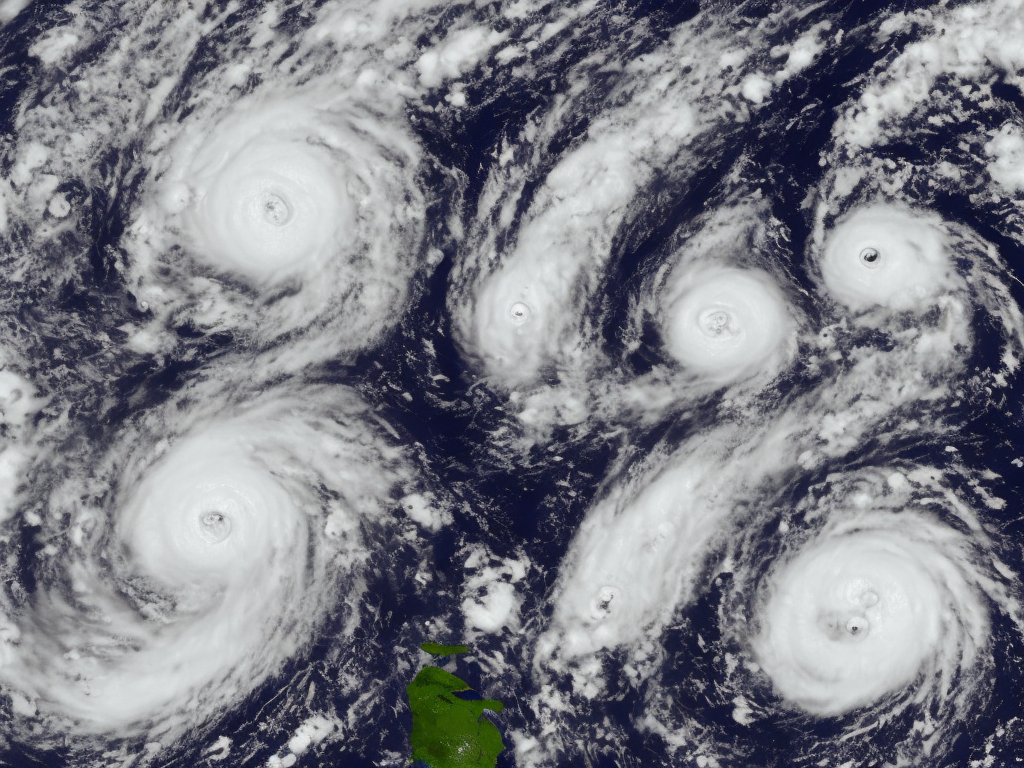
The Difference Between Hurricanes and Tropical Storms
Natural disasters have the potential to cause widespread damage and loss of life. Two types of intense weather phenomena that often make headlines are hurricanes and tropical storms. While both are caused by similar atmospheric conditions, there are distinct differences between hurricanes and tropical storms that can significantly impact the severity of their impacts.
At their core, both hurricanes and tropical storms are low-pressure systems that form over warm ocean waters. They both originate from tropical cyclones, which are rotating systems of clouds and thunderstorms fueled by warm moisture-laden air. These cyclones typically form near the equator and move in a circular motion. However, there are key differences that set them apart.
The primary distinction between hurricanes and tropical storms lies in their wind speeds. A tropical storm is characterized by sustained winds ranging from 39 to 73 miles per hour (63 to 118 kilometers per hour), whereas a hurricane is defined by sustained winds of 74 miles per hour (119 kilometers per hour) or higher. This difference in wind strength determines the category a storm falls into on the Saffir-Simpson Hurricane Wind Scale, which classifies hurricanes into five different categories based on their maximum sustained wind speed.
The consequences of these varying wind speeds are significant. Tropical storms can cause damage to infrastructure, uproot trees, and cause power outages. While they can still be dangerous, they are generally less destructive than hurricanes. Hurricanes, on the other hand, are substantially more powerful and can cause catastrophic damage. The strong winds of a hurricane can tear off roofs, flatten buildings, and uproot even sturdy structures. The accompanying storm surge, which is a rise in sea level due to a hurricane's intense winds and low atmospheric pressure, can also cause devastating flooding along coastal areas.
In addition to wind speeds, another vital factor distinguishing hurricanes from tropical storms is their size. Hurricanes are generally much larger and expansive compared to tropical storms. They typically have a well-defined eye at the center, which is surrounded by a circular wall of thunderstorms called the eyewall. Within the eyewall, the most powerful winds and heaviest rainfall occur. In contrast, tropical storms tend to have a less organized structure than hurricanes, with a less distinct eye and weaker eyewall.
The size of the storm directly influences the area impacted and the severity of its effects. With their larger size, hurricanes can cover a broader geographical area, affecting multiple states or even entire countries. The expansive wind field of a hurricane means that areas farther away from the storm's center can still experience strong winds. This poses a threat to a significant number of people, leading to the need for widespread evacuation and emergency response efforts. Tropical storms, due to their smaller size, generally have a more localized impact, affecting a smaller area and a limited number of people.
Moreover, the duration of the events is another aspect that distinguishes hurricanes from tropical storms. Tropical storms typically last for shorter periods compared to hurricanes. While tropical storms can persist for several days, they generally move at a faster pace than hurricanes. This means that the period of intense winds and heavy rainfall associated with a tropical storm is relatively shorter. In contrast, hurricanes can last for days or even weeks, subjecting affected areas to prolonged exposure to damaging winds, heavy rains, and storm surge.
Another significant difference between hurricanes and tropical storms lies in their potential to generate tornadoes. While both can produce tornadoes, hurricanes are more likely to do so. The interaction between a hurricane's strong winds and the surrounding atmospheric conditions can often spawn tornadoes. These tornadoes can occur hours before a hurricane makes landfall or during its passage, adding another layer of danger to these already destructive storms. Tropical storms, although capable of producing tornadoes, generally do so with less frequency and intensity than hurricanes.
Finally, the naming conventions for hurricanes and tropical storms also differ. Tropical storms are given names when their maximum sustained winds reach 39 miles per hour (63 kilometers per hour). These names are usually generated alphabetically from a predetermined list each year. Once a tropical storm strengthens into a hurricane, it retains the same name. However, if a hurricane becomes particularly destructive or deadly, its name may be permanently retired and replaced with a different name in the future. This system allows for easy identification and communication of storm systems.
In conclusion, while hurricanes and tropical storms share some similarities, there are distinct differences that set them apart. The primary distinguishing factors are the wind speeds, size, duration, and potential for tornado formation. Understanding these differences is crucial for disaster preparedness and response efforts, as the severity of impacts can vary significantly between hurricanes and tropical storms. By being well-informed and prepared, individuals, communities, and governments can better navigate the challenges posed by these powerful weather phenomena.
 Self-Instruct
Self-Instruct